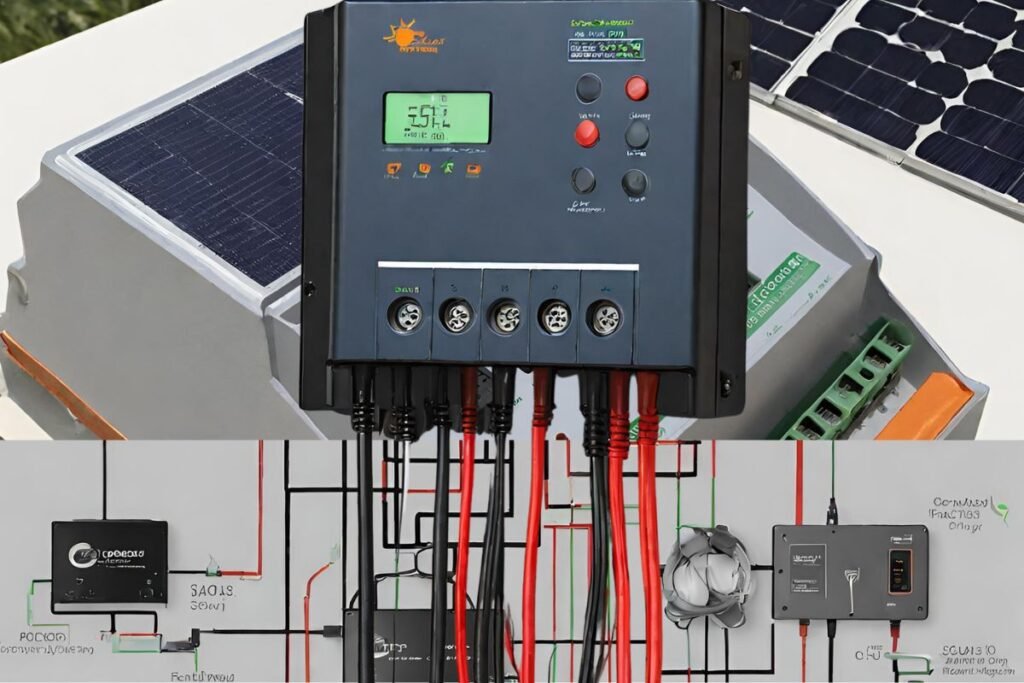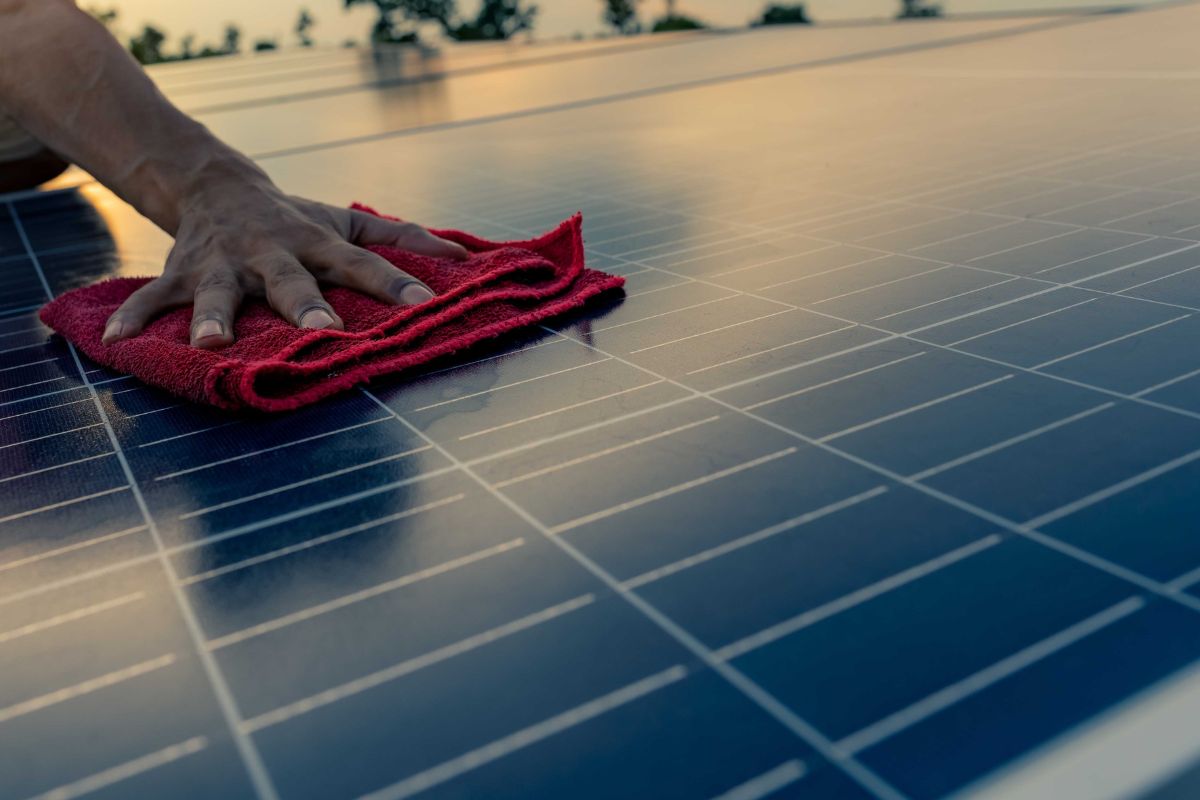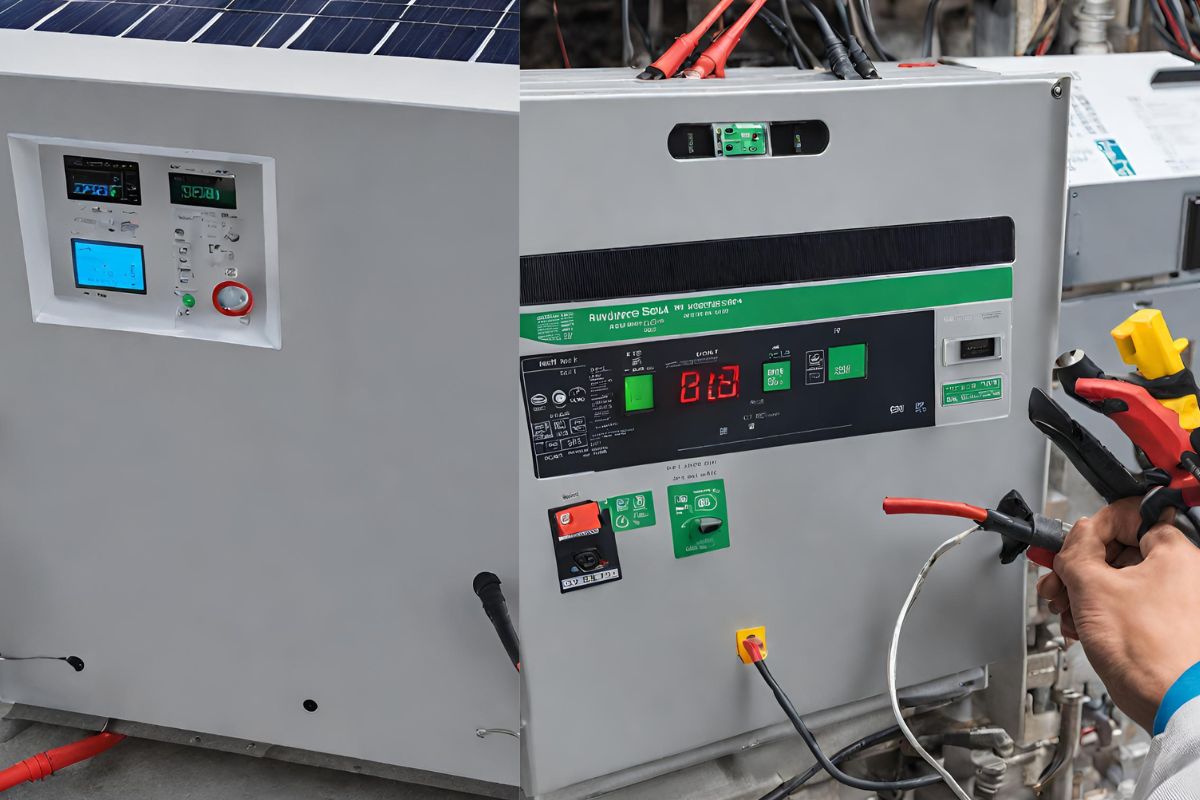Do you want to know what does a solar charge controller do? The solar charge controller regulates the current charges between a solar panel and the batteries.
But there is more to just regulating the current charges, I will show other amazing functions of the solar charge controller.
However, from my 13 years of experience, I have understood that what a solar charge controller does is worth a lot more as it plays an important function in the photovoltaic system.
In the following section, Let us dive into more detail to learn what solar charge controllers do.
Interesting article how to select solar charge controller(proven experience).
How Does a Solar Charge Controller Work?
Most charge controllers have a charge current that flows through a semiconductor that works like a valve to control the current.
The charge controllers also prevent batteries from being overcharged by reducing the energy flow to the battery once it has reached a certain voltage.
Here are some other charge controller important features offered, such as overload protection, reverse current blocking, and under-voltage lockout.
Overload protection of solar charge controller
Overload protection is a key feature provided by charge controllers. If the current going into your batteries is significantly more than the circuit’s capacity, your system may get overloaded. Charge controllers prevent such overloads from occurring.
See why a 400 watt solar panel is perfect for your home.
Reverse current blocking
Solar cells pump current through your battery in one direction. At night, the cells can naturally allow some of this current to pass in the opposite direction.
This can lead to a slight discharge of the battery, but with the solar charge controller you can be sure of reverse current blocking.
Solar charge controller under voltage shutdown
This feature automatically disconnects when non-loads on the battery and the voltage falls below the set threshold.
The connection to the battery is automatically restored when the battery is charged. This prevents overcharging.
It is also important that the solar charge controller be programmed to indicate the type of batteries, their capacity, and operating voltages. This is due to the existence of three states of charge:
Absorbed phase of the solar charge controller
When the battery voltage gets to the absorption voltage, the solar charge regulator maintains the voltage slightly below that value and gradually reduces the current until the battery is practically full.
Bulk phase of the solar charge system
Here, the battery is discharged, and all the current produced in the photovoltaic field is injected into the batteries. Which increases the voltage in the battery as it fills up.
Float phase of the solar charge system
In this phase, the voltage is reduced to the float voltage (usually 13.5 V). And the injected current is reduced until the battery is filled.
All the energy that is generated greater than the energy that can be injected into the battery is lost due to the heat effect in the regulator.
What Are Solar Charge Controllers?
The charge controller are electronic device whose function is to control the state of charge of the batteries. And manage the power going into the battery bank from the solar array. This ensures that they are optimally filled and thus extend their useful life.
The charge controller in your solar system is between the energy source/panels and batteries. Their work regulates the current flowing from the panel to your inverter.
A solar charge regulator is placed between the photovoltaic field (energy source/panels) and the battery field (storage) and controls the flow of energy that circulates between both equipment.
The energy flow is controlled by the parameters of Intensity (I) and Voltage (V) at which it is injected into the battery.
This flow of energy depends on the state of charge of the batteries and the power generated by the photovoltaic field.
They come as an electronic box connected to your photovoltaic electricity production system.
They also prevent battery discharge by shutting down the system when stored power falls below 50% capacity and charging the batteries at the perfect voltage level.
The charge controller also serves as a “traffic manager” for the power generated by the solar panels. This is to ensure that the correct amount of current (electricity) is transferred to the batteries for charging. And changing this flow to meet the demands of the batteries, optimizing the charging process.
It can additionally regulate the power sent through connected loads, protecting them from voltage surges.
What Does A Solar Controller Do When The Battery Is Full?
The charge controller diverts the excess energy when the solar battery is full. Which is one of the primary roles of the solar charge controller.
This is to ensure that the batteries receive the correct, current level to prevent overcharging and the risk of damage.
As soon as a solar battery reaches full charge. The charge controller diverts the extra power, with the help of the inverter, to mitigate risks by handling excess power.
The amount of power pushed to the battery varies depending on what stage of charging it is in. The battery will continue to trickle charge when it is fully charged.
As more current flows into charged batteries, the internal battery plates and electrolytes eventually fail as the incoming current has nowhere to go.
This excess could cause irreversible battery damage and risk rupture or explosion.
The solar charge controller steps in and controls the current flow to the batteries. By slowing it down and gradually stopping the current as the batteries reach full charge.
Then, as the batteries are used, the solar charge controller will allow the necessary current to start the charging process again.
Solar power systems commonly use Inverters and charge controllers to ensure flow charging and transfer surplus charges.
You may, however, return electricity to the grid. Community members who cannot afford solar panels or other renewable energy sources might benefit from surplus energy sent back into the grid.
What are the disadvantages of solar charge controllers?
While solar charge controllers are indisputable allies for optimizing the operation of your solar power plant and your batteries, they are not without their drawbacks.
In general, the main back with a solar charge controller are:
They have a problem with Low battery voltage. When the battery voltage is low, the controller shuts off. To solve these issues, use an AC charger to charge the battery.
When the charge output is excessive, the controller automatically turns off the load.
Advantages of the solar charge controller
There are numerous advantages to installing a charge controller on your photovoltaic solar system.
When you want to know the advantages of a charge controller, you should know that charge controllers can vary because they come in different types.
However, in this section, I will try my best to give the common benefits of the solar charge controller.
Here are some advantages of using a charge controller in various applications, particularly in solar power systems:
One of the main and common advantages of the solar charge controller is that they all help to protect batteries from either overcharging or over-discharging.
The up and down of batteries, that is, when they overcharge and the complete discharge of these batteries continually, can quickly reduce the lifespan of a battery.
However, installing a charge controller can significantly solve that situation and extend the battery lifespan in solar systems.
The charge controller can help monitor the battery voltage and regulate the charging process to help prevent damage from excess voltage levels.
When dealing with hybrid systems and battery storage. The charge controllers play a big role in managing the energy flow between the solar panels, batteries, and loads.
The charge controllers, especially Maximum Power Point Tracking (MPPT) controllers, optimize the energy harvested from solar panels.
They adjust the charging current and voltage to ensure that the solar panels function at their maximum power output, which will help increase the general system efficiency.
What Happens If You Don’t Have A Solar Charge Controller?
If you don’t have a solar charge controller, the batteries in your solar power system could be overcharged or damaged due to an irregular charging process from the solar panels.
Charge controllers are an essential component in solar systems. No matter your solar panels and batteries’ numbers, you will only get better performance if the controller is available.
Here are some questions I got from one of my clients, and I answered straight away:
Can You Operate The Solar System Without A Charge Controller?
Yes, you can operate a solar system without a charge controller. Still, it’s not recommended as the charge controller plays its role in regulating the charging process. Preventing overcharging, and ensuring the optimal performance and longevity of the battery bank in the solar power system.
But if I don’t have a battery?
If you don’t have a battery in your solar system setup. Then the need for a charge controller becomes less important. As its primary function is to regulate and manage the charging and discharging of batteries.
However, suppose you’re directly connecting solar panels to a load without a battery.
In that case, you might still need a controller to regulate the voltage and ensure that the load receives a stable and appropriate amount of power from the solar panels.
The truth is that you don’t need a charge controller when you don’t have batteries. When you don’t need to store energy, you don’t need batteries. Charge controllers are only for charging batteries.
You may need a voltage controller when you don’t have batteries. If you want constant voltage for anything, you need a voltage converter. Mind you, the voltage from a solar panel varies with the Intensity of the sunlight and the current drawn by connected loads.
Final Thought
The controller regulates the input of energy from the solar panels to the batteries depending on the state of the batteries.
It also protects the battery against possible overloads and excessive voltages. Compensating for a higher voltage from the photovoltaic field so that the battery is not damaged depending on the state of charge in which it is at all times.
Whenever the voltage from the solar panels rises, the charge controller picks up to regulate the charging of the batteries. To avoid any possible overload. This prevents excessive voltage from damaging the batteries.
You can also click here to read about how to set up mppt solar charge controller.



